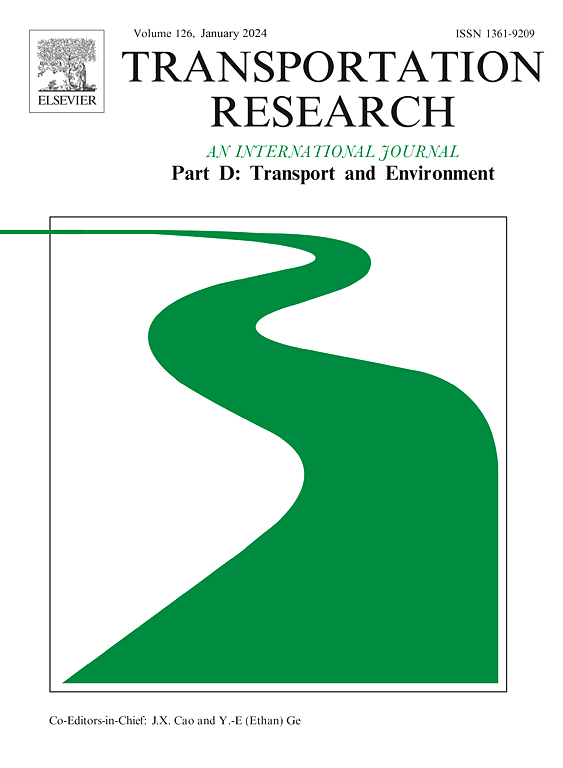高铁、技术改进和碳排放效率
IF 7.7
1区 工程技术
Q1 ENVIRONMENTAL STUDIES
Transportation Research Part D-transport and Environment
Pub Date : 2025-03-06
DOI:10.1016/j.trd.2025.104685
引用次数: 0
摘要
减少碳排放和提高碳效率是全球责任,而高速铁路作为一种新型的交通基础设施在这一过程中发挥着至关重要的作用。本文采用差中差模型来评估高铁连通性对碳排放效率的影响。结果表明,高铁连通性以及站点和线路数量分别使碳排放效率提高了0.4%、0.2%和0.3%。这种影响在较小的城市和市场化程度较低的地区更为明显。微观数据表明,高铁的有效冲击半径为2000 m。高铁增加了企业的化石能源消耗,同时减少了电力消耗。高铁降低总体碳排放的主要机制是提高企业化石能源碳排放效率。平行趋势检验、安慰剂检验和内生性分析均支持这些发现。研究结果为高铁车站附近的工业园区选址提供了有价值的见解,并强调了限电可能会限制碳减排的速度。本文章由计算机程序翻译,如有差异,请以英文原文为准。
High-speed rail, technological improvement, and carbon emission efficiency
Reducing carbon emissions and improving carbon efficiency are global responsibilities, and high-speed rail (HSR), as a new form of transportation infrastructure, plays a crucial role in this process. This paper employs the difference-in-difference model to assess the impact of HSR connectivity on carbon emission efficiency. The results show that HSR connectivity, as well as the number of stations and routes, increased carbon emission efficiency by 0.4%, 0.2%, and 0.3%, respectively. The effect is more pronounced in smaller cities and regions with lower marketization. Micro-level data reveals that the effective impact radius of HSR is 2000 m. HSR increases fossil energy consumption in firms while reducing electricity consumption. The primary mechanism by which HSR reduces overall carbon emissions is by improving the fossil energy carbon emission efficiency of firms. Parallel trend tests, placebo tests, and endogeneity analyses all support these findings. The results provide valuable insights for the location of industrial parks near HSR stations and highlight that power rationing may limit the speed of carbon reduction.
求助全文
通过发布文献求助,成功后即可免费获取论文全文。
去求助
来源期刊
CiteScore
14.40
自引率
9.20%
发文量
314
审稿时长
39 days
期刊介绍:
Transportation Research Part D: Transport and Environment focuses on original research exploring the environmental impacts of transportation, policy responses to these impacts, and their implications for transportation system design, planning, and management. The journal comprehensively covers the interaction between transportation and the environment, ranging from local effects on specific geographical areas to global implications such as natural resource depletion and atmospheric pollution.
We welcome research papers across all transportation modes, including maritime, air, and land transportation, assessing their environmental impacts broadly. Papers addressing both mobile aspects and transportation infrastructure are considered. The journal prioritizes empirical findings and policy responses of regulatory, planning, technical, or fiscal nature. Articles are policy-driven, accessible, and applicable to readers from diverse disciplines, emphasizing relevance and practicality. We encourage interdisciplinary submissions and welcome contributions from economically developing and advanced countries alike, reflecting our international orientation.

 求助内容:
求助内容: 应助结果提醒方式:
应助结果提醒方式:


